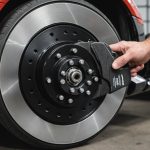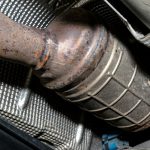Winter is notorious for its adverse effects on the performance of both traditional and hybrid vehicles. The plummeting temperatures come with a myriad of challenges including reduced engine efficiency, increased battery discharge rates, and even decreased tyre traction. UK residents, this article will guide you in understanding how you can keep your hybrid vehicle running in a cost-effective manner during the chilly season. It focuses on five key areas; understanding your hybrid vehicle, efficient route planning, optimal driving habits, appropriate vehicle maintenance, and leveraging on technology.
Understanding Your Hybrid Vehicle
To maximize fuel efficiency in a hybrid vehicle during winter, the first step is to comprehend how your vehicle operates. Hybrid vehicles combine an internal combustion engine with an electric motor. The engine primarily powers the vehicle at high speeds, while the electric motor provides propulsion during the initial start and at low speeds. The battery stores energy for the electric motor.
In parallel : What are the consequences of not updating your vehicle registration in the UK?
However, cold temperatures can significantly affect the performance of a hybrid vehicle. They can lower the mpg (miles per gallon) rating of your vehicle. The battery capacity can also decrease, leading to reduced range. The electric motor may also operate less frequently, forcing the vehicle to rely heavily on the fuel engine. Understanding these dynamics is critical in maximizing fuel efficiency during winter.
Efficient Route Planning
Route planning plays a major role in fuel efficiency, especially during winter. When planning your route, consider roads that will allow for a steady speed. This is because hybrid vehicles are more efficient at constant speeds rather than stop-start traffic.
Also read : How do seasonal changes in the UK affect the performance of electric vehicle batteries?
A GPS system can be very useful in providing real-time traffic updates, helping you avoid congested areas. It can also provide information on road conditions. During winter, some roads may be icy or snow-covered, posing a risk to your safety and affecting your vehicle’s fuel efficiency.
Additionally, consider routes with fewer steep gradients. Going uphill will require your vehicle to use more energy, thus reducing its fuel efficiency.
Optimal Driving Habits
Your driving habits also contribute to the fuel efficiency of your hybrid vehicle. During winter, it is advisable to avoid harsh acceleration. This is because it forces the vehicle to draw power from the fuel engine, which is less efficient than the electric motor.
Instead, accelerate gradually. This will allow your vehicle to draw power from the electric motor, thus saving fuel. Similarly, decelerate gradually. This will enable the regenerative braking system to recharge the battery, further enhancing the fuel efficiency.
Appropriate Vehicle Maintenance
Regular maintenance of your hybrid vehicle is essential in maximizing fuel efficiency during winter. Checking your vehicle’s tyre pressure regularly is vital. Tyres tend to lose pressure in cold temperatures, affecting the vehicle’s traction and fuel efficiency.
The battery also needs special attention during winter. To extend its life and optimize its performance, make sure to park your vehicle in a warm place whenever possible. This will help maintain the battery’s temperature, thus reducing energy loss.
Your vehicle’s engine oil also contributes to fuel efficiency. During winter, opt for low-viscosity engine oil. This type of oil flows more freely at low temperatures, reducing engine friction and improving fuel efficiency.
Leveraging on Technology
Modern hybrid vehicles come equipped with technology that can aid in maximizing fuel efficiency. These include features like Eco mode, which optimizes the vehicle’s performance to enhance fuel efficiency.
Another useful feature is the regenerative braking system. This system captures the energy generated during deceleration and uses it to recharge the battery. This reduces the need for charging using external power sources, therefore saving fuel.
Advanced hybrid vehicles also have a heat pump system. This system uses the heat generated by the engine and electric motor to warm the car’s interior. This reduces the need for using the car’s heater, which drains the battery.
Finally, it’s worth considering an app for your smartphone that can provide real-time data on your vehicle’s performance. This can help you monitor your driving habits and make necessary adjustments to improve fuel efficiency.
Remember, driving a hybrid vehicle during winter can be cost-effective if you understand your vehicle, plan your route efficiently, adopt optimal driving habits, maintain your vehicle appropriately, and make good use of technology.
Changing Tyre Size and Maintaining Proper Tyre Pressure
Choosing the correct tyre size and maintaining the right tyre pressure for your hybrid vehicle can substantially enhance fuel efficiency, particularly in cold weather conditions such as those experienced during the months of December, January, and February in the UK. In essence, the right tyre size correlates to optimal contact with the road, leading to improved traction and, in turn, better fuel economy.
During winter, when the temperatures are low, the tyre pressure has a tendency to decrease. This can lead to increased tyre width, which results in more drag and, therefore, reduced fuel efficiency. Thus, even if it may seem trivial, checking and adjusting your tyre pressure regularly during the winter months – December, January, February, and even into March – is crucial in maintaining optimal fuel economy.
Moreover, it’s equally important to invest time in understanding the speed rating of your tyres. Tyres with higher speed ratings tend to have better grip and handling characteristics, but may also have higher rolling resistance, leading to reduced fuel efficiency. It’s therefore crucial to strike a balance, selecting tyres with a speed rating that is appropriate for the typical speeds at which you drive.
Remember, the correct tyre size and pressure not only improve your hybrid vehicle’s fuel efficiency, but they also enhance safety, especially during the winter season.
Utilising Vehicle Heating Systems Efficiently
During the colder months – November, December, January and February – the inside of your car can become quite chilly, tempting you to crank up the heating system. While this is understandable, excessive use of the heating system can deplete your hybrid vehicle’s battery more quickly, subsequently increasing reliance on the petrol engine and decreasing fuel efficiency.
Fortunately, modern hybrid vehicles are incorporating more efficient ways of heating the interior. For instance, some use a heat pump system that leverages the heat generated by the engine and electric motor. This can be a more energy-efficient way of maintaining a comfortable temperature inside the car during the colder months, from November to March.
Additionally, it’s worth preparing for your journey in advance. Instead of relying on your car’s heating system to warm up the interior, consider pre-heating your car while it’s still plugged in and charging. This will utilise grid electricity rather than the car’s battery for heating, preserving the battery’s energy for driving.
Finally, dress warmly for your journey. This may seem obvious, but dressing warmly can significantly reduce your reliance on the car’s heating system, thus conserving battery power and optimising fuel efficiency during the colder months.
Conclusion
Maximising fuel efficiency in hybrid vehicles during winter is achievable for all UK residents. By understanding the intricacies of our hybrid vehicles, making efficient route choices, driving optimally, performing regular vehicle maintenance and using technology to our advantage, we can significantly enhance fuel economy. Recognising the impact of tyre size and pressure on fuel efficiency, along with utilising vehicle heating systems efficiently, is also crucial, especially during the peak cold weather months from November through March. Adopting these practices will not only lead to cost savings but will also contribute to a more sustainable environment. Lastly, remember fuel efficiency doesn’t have to drop dramatically during winter – with the right strategies and habits, you can keep your hybrid vehicle running cost-effectively all year round.











